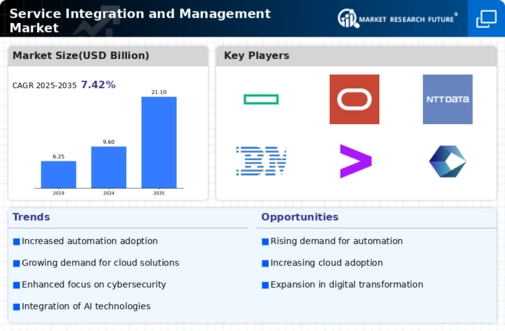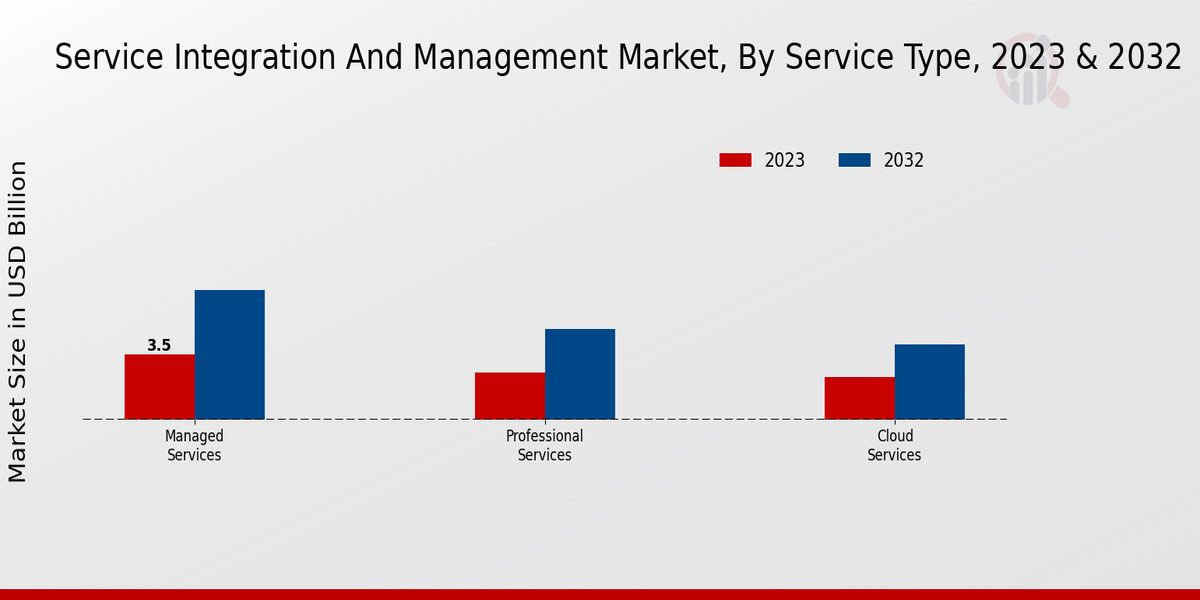Market Growth Chart
Market Growth Projections
The Global Service Integration and Management Market Industry is poised for substantial growth, with projections indicating a compound annual growth rate of 7.43% from 2025 to 2035. This growth trajectory reflects the increasing adoption of integrated service solutions across various sectors. As organizations recognize the value of streamlined service delivery and enhanced operational efficiency, investments in Service Integration and Management frameworks are expected to rise. The market is anticipated to reach 21.1 USD Billion by 2035, driven by the need for businesses to adapt to evolving market conditions and customer expectations. This growth presents significant opportunities for service providers and technology vendors.
Technological Advancements
Technological advancements play a pivotal role in shaping the Global Service Integration and Management Market Industry. Innovations such as artificial intelligence, machine learning, and automation are transforming how services are integrated and managed. These technologies enable organizations to analyze vast amounts of data, streamline processes, and enhance decision-making capabilities. As a result, businesses can achieve greater agility and responsiveness to market demands. The integration of advanced technologies is expected to contribute significantly to the market's growth, with projections indicating a rise to 21.1 USD Billion by 2035. This evolution underscores the importance of staying abreast of technological trends to remain competitive.
Growing Demand for Integrated Services
The Global Service Integration and Management Market Industry experiences a growing demand for integrated services as organizations seek to streamline operations and enhance efficiency. Businesses are increasingly recognizing the need for cohesive service delivery across various platforms. This trend is driven by the necessity to reduce operational costs and improve service quality. In 2024, the market is projected to reach 9.6 USD Billion, reflecting the increasing investment in integrated service solutions. Companies are adopting Service Integration and Management frameworks to facilitate collaboration among multiple service providers, which is essential for achieving optimal performance and customer satisfaction.
Increased Focus on Customer Experience
An increased focus on customer experience is driving the Global Service Integration and Management Market Industry. Organizations are prioritizing customer satisfaction and engagement, recognizing that seamless service integration is crucial for delivering exceptional experiences. By employing Service Integration and Management practices, businesses can ensure that all service components work harmoniously, leading to improved customer interactions. This shift towards customer-centric approaches is likely to propel market growth, as companies invest in technologies and strategies that enhance service delivery. The emphasis on customer experience is expected to be a key factor influencing market dynamics in the coming years.
Regulatory Compliance and Risk Management
Regulatory compliance and risk management are critical drivers of the Global Service Integration and Management Market Industry. Organizations face increasing pressure to adhere to various regulations and standards, necessitating robust service integration strategies. Effective management of compliance requirements can mitigate risks and enhance operational resilience. As businesses navigate complex regulatory landscapes, the demand for integrated service solutions that ensure compliance is likely to rise. This trend is particularly relevant in sectors such as finance and healthcare, where regulatory scrutiny is intense. Consequently, the market is expected to witness substantial growth as organizations prioritize compliance and risk management.
























